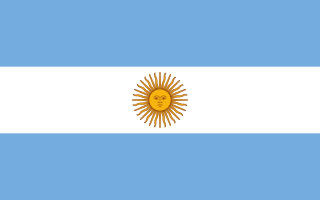
A Brief History of Argentina
The name Argentina originates from argentum, the Latin term for silver, coined by Spanish conquistadores who believed in vast treasures upon their early-sixteenth-century arrival. The River Plate is a misinterpretation of Río de la Plata, meaning “River of Silver” in Spanish. Argentina gained independence on July 9, 1816, ending its Spanish colonial era.
Early Inhabitants
Argentina’s vast, diverse landscape was home to various Indigenous peoples whose influence extended beyond modern borders. Shared traditions emerged due to similar challenges faced by Indigenous inhabitants in Argentina and neighboring countries.
The Spanish Conquistadores
Spanish navigator Juan Díaz de Solís “discovered” Argentina in 1516, while Florentine explorer Amerigo Vespucci played a key role. Patagonia was inhabited by Tehuelches, Mapuches, Yamana, and Selk’nam.
The “White King”
Portuguese sailor Alejo García, stranded on an island, heard of a wealthy “White King” in the west. Spain’s quest for conquest continued, leading to the establishment of settlements like Sancti Spiritu by Sebastian Caboto in 1527.
The Birth of a Capital
In 1536, Pedro de Mendoza founded Nuestra Señora Santa María del Buen Ayre (Buenos Aires). Coexistence with Indigenous people turned hostile, leading to conflict, sieges, and retreats.
The Journey Toward Independence
Argentina’s territories were part of the Viceroyalty of Peru until 1776 when the Viceroyalty of the River Plate was created. The Napoleonic Wars and discontent with colonial governance fueled the war for independence, culminating in the declaration on July 9, 1816.
Turmoil and Prosperity
Post-independence, Argentina faced internal conflicts, wars with neighboring countries, and political instability. The late 19th century saw economic prosperity, immigration waves, and the establishment of Buenos Aires as the federal capital.
The Right to Choose
By the early 20th century, Argentina became one of the world’s wealthiest nations. Universal male suffrage was granted in 1912. Military coups, political instability, and economic challenges characterized the mid-20th century.
The Birth of Nationalism
The 1943 military coup aimed to eradicate corruption but led to a period of military rule. Argentina’s neutrality during World War II strained international relations. Juan Domingo Perón’s populist presidency from 1946 to 1955 faced economic challenges and autocratic tendencies.
The South Atlantic War and the Restoration of Democracy
The 1982 Falklands/Malvinas War with Britain marked the end of military rule. Civilian rule resumed in 1983 with Raúl Alfonsín’s election. Economic troubles persisted, leading to periods of prosperity and crises in the following decades.
Recent Years
Political changes, economic challenges, and social unrest continued into the 21st century. Presidents like Néstor Kirchner and his wife, Cristina Fernández de Kirchner, faced economic difficulties, and the country witnessed shifts in political leadership.
As of the latest information available (January 2023), Argentina’s political landscape remained dynamic, marked by economic challenges, inflation, and shifting political dynamics.
Economy of Argentina
Argentina boasts abundant natural resources, encompassing oil, gas, and minerals. With more than 32 million hectares of arable land producing over 145 million tons of cereals and oleaginous crops, agriculture remains the linchpin of the economy, generating the highest revenue. The primary crops include wheat, barley, sunflower, maize, soy, and sorghum. Argentina sustains a robust cattle population exceeding 53 million, contributing significantly to the production of meat, dairy, and raw materials for the textile sector.
The industrial sector in Argentina has seen rapid growth, with food and beverages constituting one-third of the country’s output. Another third comprises chemical industries, vehicles, oil refineries, machinery, and the production of base metals.
However, recent economic downturns stem from government policies, such as import restrictions and non-payment of creditors and investment funds. This stance has eroded the government’s credibility, risking potential sanctions from the International Monetary Fund (IMF) for non-compliance with fiscal and economic agreements.
The repercussions of these economic challenges manifest in heightened inequality and poverty, leading to social unrest, including roadblocks and demonstrations, particularly in Buenos Aires.
COVID-19
Argentina’s response to the initial Covid-19 case in March 2020 was swift, implementing an extensive eight-month lockdown. Despite stringent measures, the virus persisted, especially in informal settlements. Successful vaccination campaigns, alongside lockdowns and social distancing, played a pivotal role in curbing cases and deaths. As of January 2023, Argentina reported over 10 million cases and 130,249 fatalities.
The economic fallout included a temporary ban on dismissals, frozen rents, and increased welfare to poor families. Unemployment, reaching 11 percent, prompted government subsidies for private company workers and financial support for self-employed individuals and small- to medium-sized enterprises (SMEs).
By late 2022, Argentina’s GDP rebounded, surpassing pre-pandemic levels by 7.5 percent. The pandemic induced permanent changes, impacting struggling businesses and accelerating the embrace of digital practices in daily life.
MAJOR CITIES
Buenos Aires
As Argentina’s capital and largest city, Buenos Aires, with a population just under 15 million, embodies the nation’s cultural and economic heart. The city, often referred to as the “Paris of South America,” boasts diverse architectural styles, reflecting its rich history. Despite economic challenges, Buenos Aires remains a dynamic metropolis, blending tradition with a fast-paced lifestyle. The city’s neighborhoods, including Plaza de Mayo, San Telmo, La Boca, Palermo, and La Recoleta, showcase its multifaceted character. From cultural landmarks like the Museo de Bellas Artes to vibrant music scenes, Buenos Aires offers a unique blend of sophistication and local flair.
Córdoba
Situated in the country’s center, Córdoba, the second-largest city, charms with a population just under 1.4 million. Known as the “City of Bells,” it features numerous churches and offers a wealth of museums and green spaces, such as Parque Sarmiento. Córdoba’s history is marked by significant political events, and its people, the Cordobeses, are recognized for their friendliness, determination, and distinctive musical accent.
Wikipedia